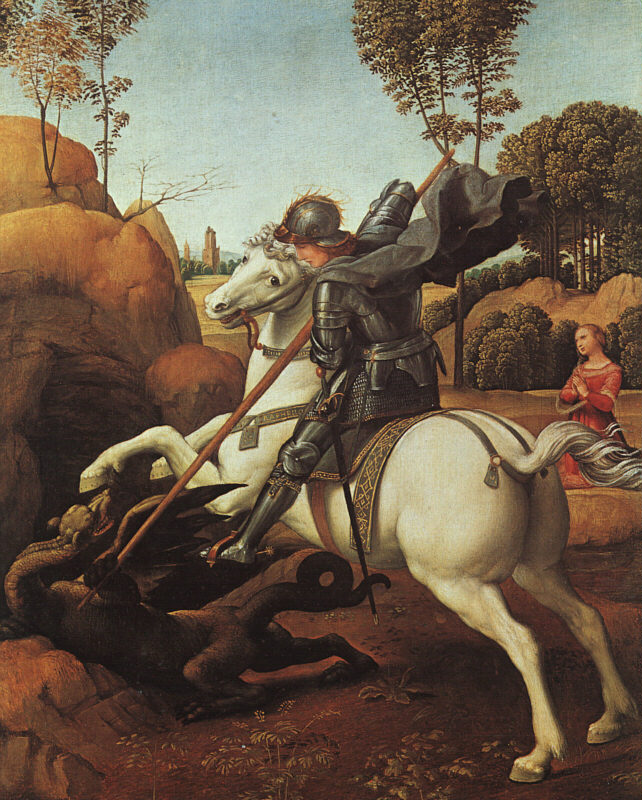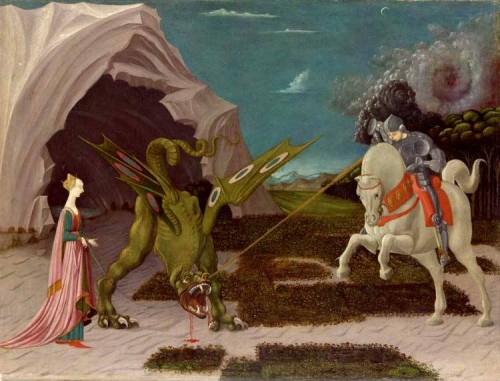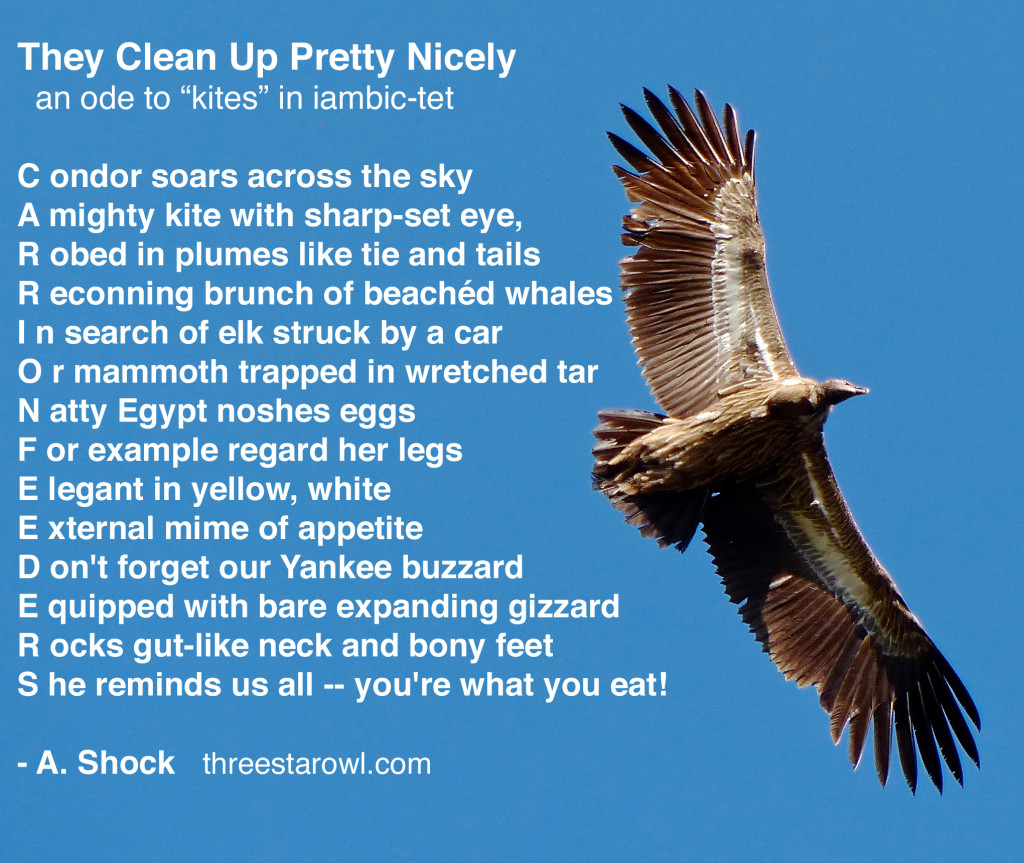 Here’s St. George killing a dragon (which in this case is admittedly a very mammalian-looking scourge). Note the size of the creature. Most St.George dragon-slayer paintings show a dragon smaller than a horse, in the vicinity of a cave and peaks in the wilderness, not a giant dinosaurian Smaug-type scale-meister.
Here’s St. George killing a dragon (which in this case is admittedly a very mammalian-looking scourge). Note the size of the creature. Most St.George dragon-slayer paintings show a dragon smaller than a horse, in the vicinity of a cave and peaks in the wilderness, not a giant dinosaurian Smaug-type scale-meister.
This observation is added to the arguments of the last post as meta-evidence of the vulture as dragon-source. Also, it’s an excuse to post this fine painting by Raphael which has been a favorite of mine since childhood.
The allegory of St. George and the dragon is a Christian re-telling of the Perseus legend, which is no doubt a re-telling of an even older tale, wherein a young hero saves the people of the country-side as well as a king’s daughter from an evil plague in the form of a dragon. For an odd version of this tale, identical in its iconography to the Raphael but almost Dali-esque in lay-out, check out Paolo Uccello’s St. George (ca. 1470):
The lady does not seem to need rescuing; she appears to be walking the two-legged monster on a leash. I would put this very Jabberwocky-like anatomical configuration — two taloned legs and two wings — forward as a bird-like model for a dragon. But using art as evidence can lead to problems: look at the colorful round patterns on the bat-like wings. I do not propose that dragons and butterflies are generally considered related. And what’s with the squares of turf, and bubbly spiral rising from the trees? I’d say Uccello needed to get out more, except that there was obviously a lot of interesting stuff going on in his head… By the way, “Uccello”, a nickname, came from the painter’s fondness of painting birds, and means “bird” in Italian (and, like “cock” has another meaning, according to online sources).
Click on either painting for a larger image.
The Uccello painting, which is in London’s National Gallery, inspired the U.A. Fanthorpe poem “Not my best side”. It has nothing at all to do with vultures, but it made me laugh that such an iconic religious allegorical painting gave rise to such secular speculation — a perfect illustration of how art inspires without regard for artists’ intentions:
I
Not my best side, I’m afraid.
The artist didn’t give me a chance to
Pose properly, and as you can see,
Poor chap, he had this obsession with
Triangles, so he left off two of my
Feet. I didn’t comment at the time
(What, after all, are two feet
To a monster?) but afterwards
I was sorry for the bad publicity.
Why, I said to myself, should my conqueror
Be so ostentatiously beardless, and ride
A horse with a deformed neck and square hoofs?
Why should my victim be so
Unattractive as to be inedible,
And why should she have me literally
On a string? I don’t mind dying
Ritually, since I always rise again,
But I should have liked a little more blood
To show they were taking me seriously.
II
It’s hard for a girl to be sure if
She wants to be rescued. I mean, I quite
Took to the dragon. It’s nice to be
Liked, if you know what I mean. He was
So nicely physical, with his claws
And lovely green skin, and that sexy tail,
And the way he looked at me,
He made me feel he was all ready to
Eat me. And any girl enjoys that.
So when this boy turned up, wearing machinery,
On a really dangerous horse, to be honest
I didn’t much fancy him. I mean,
What was he like underneath the hardware?
He might have acne, blackheads or even
Bad breath for all I could tell, but the dragon–
Well, you could see all his equipment
At a glance. Still, what could I do?
The dragon got himself beaten by the boy,
And a girl’s got to think of her future.
III
I have diplomas in Dragon
Management and Virgin Reclamation.
My horse is the latest model, with
Automatic transmission and built-in
Obsolescence. My spear is custom-built,
And my prototype armour
Still on the secret list. You can’t
Do better than me at the moment.
I’m qualified and equipped to the
Eyebrow. So why be difficult?
Don’t you want to be killed and/or rescued
In the most contemporary way? Don’t
You want to carry out the roles
That sociology and myth have designed for you?
Don’t you realize that, by being choosy,
You are endangering job prospects
In the spear- and horse-building industries?
What, in any case, does it matter what
You want? You’re in my way.
–U.A. Fanthorpe



